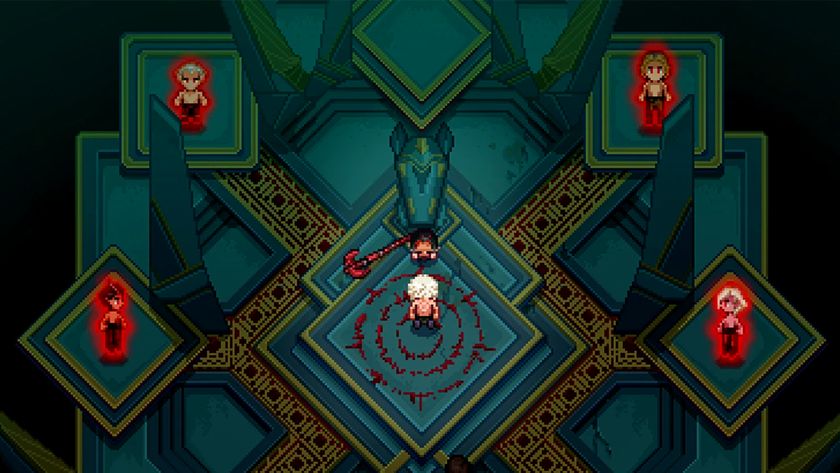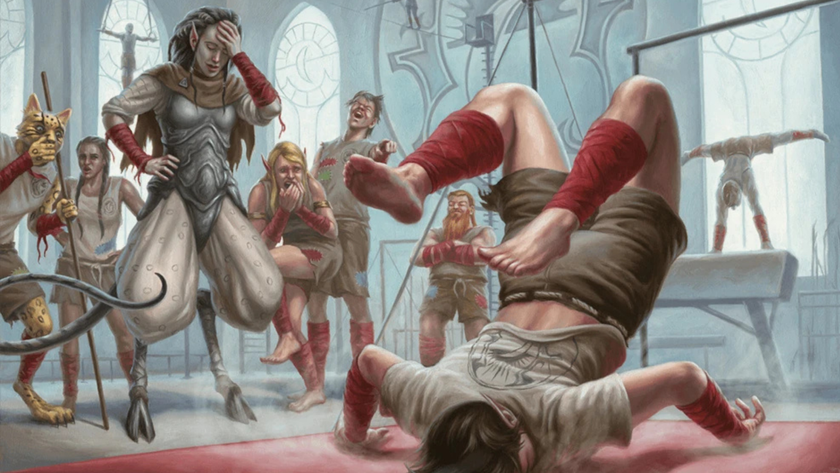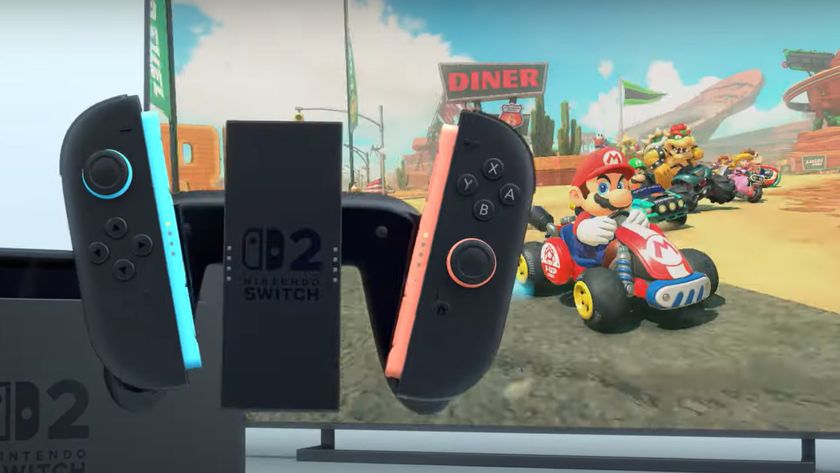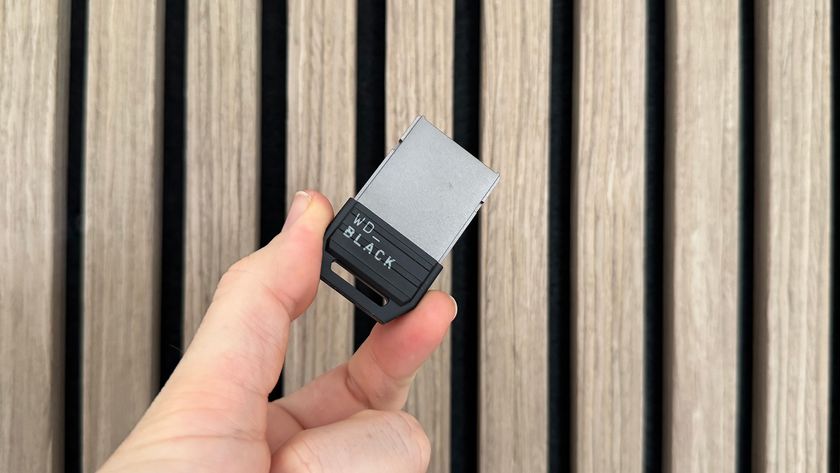Why you can trust 12DOVE
With the Pokemon series about to be reborn in glittering double-screen style on Nintendo DS, Pokemon Emerald sees the original form of the game take its final bow.
After seven years of defiantly static, stubbornly ugly creature collection, stage one of the phenomenon ends here.
But this is an annoying way to crown seven years of catching (and clobbering) 'em all on Game Boy. Emerald is simply the celebrity marriage of 2003 chart-conquerors Ruby and Sapphire. A few extra bits and bobs have been bolted on to keep Nicky Campbell from shoulder-barging through Nintendo's door on behalf of a nation full of disappointed 10-year-olds, but that's it.
We like having almost all of the Ruby and Sapphire Pokemon imprisoned in one cart, we like the wireless capability and we like the new Battle Frontier, but couldn't we have had all this the first time around, rather than for another 30 notes two years later?
Emerald's plot merges Ruby and Sapphire's storylines together. So, rather than stumbling on the plans of Team Magma or Team Aqua, you get under the feet of both.
As either Brendan or May (or "Hasselhoff", as we vainly tried to name our hero in the space allowed), it's your job to kick the asses and take the names of the twin troublemaking teams.
Although it's not much of a story, truth be told. As Ruby/Sapphire veterans, we were almost in tears as we waded through the syrup of what is essentially an identical rehash of the excitement-free 2003 storyline all over again, although the neat new finale did stop us sulking for a bit.
The game though, is as lethally and blissfully compelling as ever.
You know you're hooked for the duration the moment you choose your starting Pokemon from Treecko, Mudkip and Torchic (again) and you're tripping over critters in the tall grass, colliding face-first with Whismurs down dark alleyways and taking on Trainers with a bad case of floating exclamation marks.
Pokemon's winning concept refuses to crumble with age, and Emerald is as much fun as our old friends Red and Blue were back in 1998. In fact, while we'd happily marry the recent Leaf Green and Fire Red if they'd only make it legal, the games that Emerald is based on really aren't that far behind them on our love-chart.
The beauty contests are a uniquely non-violent option for those who would rather not be picking bits of bloodied Pikachu off their pullover at the end of the day.
Trainers and Gym Leaders are plentiful and relatively forgiving. The ability to decorate your own secret cave with dolls and posters makes us as happy as a seven-year-old in a room full of McFly.
And while it still looks awful compared to, say, Golden Sun The Lost Age, the 200-odd hyperactive mini-monsters scrub up pretty well.
But pushing down the other side of the scales are faults and annoyances that should really have been put right by now. The kind of pace-slowing, hand-holding nonsense we can do without after seven years, thanks.
Annoyances like clicking through the same "The soil returns to its loamy state" message marathon every time we pick a berry, or having to travel to one particular house in one particular town just to change a Pokemon's name.
Shoving rocks around in caves and getting hammered by five Zubats every three paces in the process is second only to fingernails being run down a blackboard on our teeth-clench-o-meter.
Still, Emerald often glitters with new features that are hard not to like. Two-versus-two battles, which seemed a throwaway addition in Ruby and Sapphire, are now a regular occurrence - individual Trainers gang up on you, and you can even join forces with the odd GBA-controlled character for proper cooperative fights.
Speaking of which, the monsters still don't get stuck into each other during fights. They just stand there while a special effect flashes across the screen. Come on, Nintendo, it's time to bring your animal fights into the 21st century. If not blood, at least give us contact.
The phone call feature of the PokeNav - with which you can return to gyms to chalk another one up for the Littleroot Town crew - makes a welcome return from Gold and Silver, too.
It all adds variety to the trudging around between towns, and makes watching your team's green EXP meters crawl upward that much more bearable.
Rounding it all off is the colossal new Battle Frontier: the evolution of Ruby/Sapphires's Battle Tower.
It's a giant island with seven challenge areas to take on, each culminating in a battle with the Frontier Brain (not an actual brain, sadly). Even established Pokemaniacs will struggle here, with the assorted restrictions including a ban on Legendary Pokemon - so long, Kyogre - and Pokemon refusing to follow your orders.
Still, quite why unlocking Frontier requires you to smash your way through the entire game - a game that half the world has already played - is beyond us.
So, the bottom line: Emerald is for you if you missed Ruby and Sapphire, or if you're attempting to build the world's tallest tower of different Pokemon games, or you just like the name.
It's a superb title, splitting at the seams with great bits and, with wireless play borrowed from Fire Red and Leaf Green, it's a genuine multiplayer marvel.
But while there's no point trying to argue that Emerald isn't fun in a bun (hence the score), you can probably smell our cynicism from here. Combining Ruby and Sapphire as it does, you're left asking what the point of Ruby and Sapphire was in the first place.
And with so many niggling problems left over from 1998's debut carts, and so little that's actually new, there's an even bigger question that will be quite rightly forming in your mind: why don't I just wait for Pokemon on DS?

After slamming D&D's Wizards of the Coast, Baldur's Gate 3 devs celebrate "good ending" for Stardew Valley mod as it gets reinstated after a "mistaken" DMCA

The Baldur's Gate 3-themed Stardew Valley mod that Larian boss Swen Vincke called "amazing" gets DMCA'd by D&D publisher Wizards of the Coast











